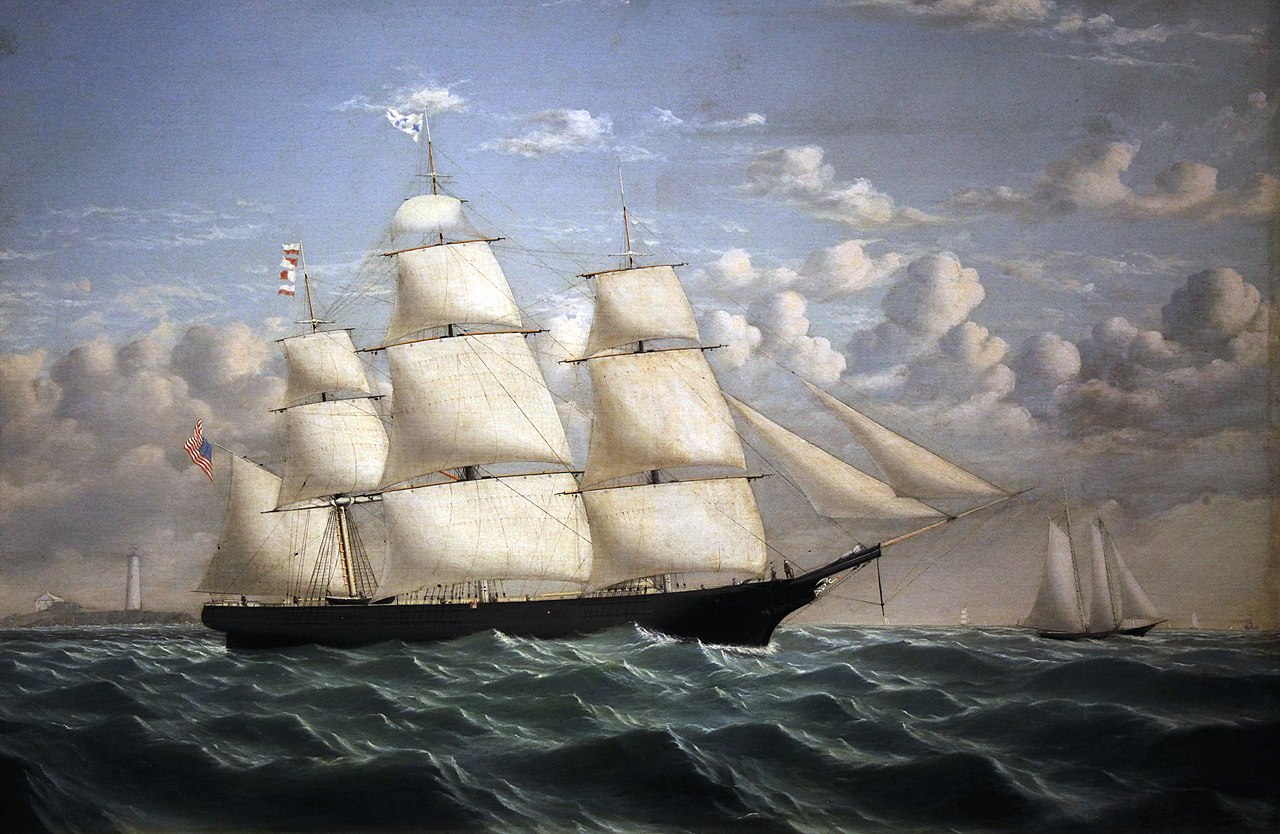JUNE 4, 2025 – (Cont.) Late in the afternoon, the big Sears delivery van pulled up to our house. Its two occupants hopped out, one holding some papers. I happened to be standing in the driveway, so I was able to vouch for the precious cargo in the hold of their ship . . . er, truck.
“Where d’ya want us to put the boxes?” the guy with the papers asked.
“Right here’s fine,” I said, directing them to the lawn on the right side of the driveway. Soon the large rectangular box containing the 10-foot-long hull, rudder/tiller and daggerboard was lying on the grass and on top of that carton was the long box with the furled sail, mast, boom, spar, mainsheet and halyard inside. Off went the truck, as I tore into the packages.
The Sunfish class boat was and still is the simplest sailboat on the market. Pass the boom/spar/sail (all in one easy piece, provided you’ve put the mast through the gooseneck) into the mast base in the hull, pull the halyard until the spar is at the top of the mast, cleat the halyard, attach the correct end of the sheet to the traveler and pass the other end through the pulleys on the boom, insert the daggerboard so the top is just below the boom, pass the tiller under the traveler and drop the rudder pins into the bracket on the transom, and you’re ready to rock and sail.
Oops! “Rock” was a poor choice of words—especially as I would learn in (un)due course. Also, before you point the bow toward the nautical horizon, you must have the boat in the water. On that very first look at my new boat fully rigged, however, it was high and dry on our lawn, just off the concrete driveway. In the dead calm of that hot, sunny July afternoon, the land-moored vessel was one brilliant sight to behold. Its orange deck and loud orange and white sail proclaimed boisterous delight amidst our quiet, leafy neighborhood. Where the familiar silhouette of a sunfish appeared on the sail of a real Alcort Sunfish back at Interlochen was a giant “F” for “Fleetwind” encircled by a pattern of stylized arrows.
When I called Mother out of the house to have a look at how her $100 investment had been transformed, she was as thrilled as I’d anticipated. “Oh, that’s just wonderful!” she said, smacking her open hands together. “I can’t wait to go for a ride!” Mother and I didn’t see eye-to-eye on many things, but in that moment, I felt a special bond that I hadn’t experienced with anyone else in our firmly land-based family.
Dad’s reaction, of course, was far more subdued. “Well, well,” he said, as he stepped out of his car upon arriving home from work. “What have we got here?”
“My new sailboat,” I said, knowing the instant the words spilled out of my mouth how unnecessarily dumb it was to be stating the obvious. But on the other hand, I told myself, what I said wasn’t any dumber than Dad’s question.
Then came the zinger. “What does the ‘F’ stand for? Failure?” he said, with a chuckle. His sarcasm seemed to suck from the humid air the slight breath that tickled the sail.
“No,” I said, miffed at his negativity. “It stands for ‘Fantastic.’” I refused to let Dad pour cold water on my venture. Often he’d stifle his abundant imagination with an overabundance of rationality and skepticism. From a more practical standpoint, however, I knew that I’d need Dad’s ingenuity and active participation in a most critical phase of bringing my dream to full fruition: transporting the sailboat to the cabin. Under the circumstances, I’d aim at his abiding interest in “how things worked” and his appreciation for “practical engineering.”
I was also relying on Dad’s reaction (and eventual capitulation) to Jenny’s entreaties for her getting a pet collie three years earlier. Initially, Dad had been dead set against the dog, but Jenny’s persuasive persistence had surmounted Dad’s resistance. Not only did he surrender, but he went the extra mile—make that two miles, all the way to the lumber yard across town to buy a truckload of materials—and built the Taj Mahal of all kennels and doghouses. Why wouldn’t he apply his brains and sweat to the far simpler task of designing a method for sliding the sailboat hull into the wooden box that he’d previously built and installed on Grandpa Nilsson’s old trailer that Dad now used for hauling stuff up to the cabin?
My bet panned out. Immediately after dinner, Dad tackled the challenge of loading the boat onto the old trailer. He first sized things up with the tape measure that he always carried in his pocket once he’d changed out of his office suit. Not wishing to injure his back lifting an end of the hull, he rummaged around for a couple of long planks, jerry-rigged the lawnmower as a dolly, assigned me a role and assumed his own. Together, we loaded the hull onto the trailer, and Dad secured it, along with the rigging and accessories. The good ship “Fleetwind” was now ready for the three-hour trip to the cabin when early Friday evening arrived 48 hours later. (Cont.)
Subscribe to this blog and receive notifications of new posts by email.
© 2025 by Eric Nilsson
